Pregnancy is a time when women’s bodies go through numerous changes that require additional care and attention. Weight training during pregnancy is an excellent practice, as it provides numerous benefits to mother and the baby.
WHAT ARE THE BENEFITS ASSOCIATED WITH WEIGHT TRAINING DURING PREGNANCY?
Weight training during pregnancy can help maintain a healthy weight. Maintaining a healthy weight can reduce the risk of complications, such as gestational diabetes and hypertension. Weight training during pregnancy can also help improve cardiovascular health, which is crucial during pregnancy. As women’s bodies change, the heart works harder to pump blood, leading to an increased risk of cardiovascular disease. However, weight training strengthens the heart and helps it pump blood more efficiently, reducing the risk of cardiovascular diseases.
Finally, weight training can help prepare women for the physical demands of childbirth. During labor and delivery, women have to use various muscles to push the baby out. By increasing strength & endurance with weight lifting, women become better equipped to handle the physical demands of childbirth. Weight training during pregnancy provides numerous benefits to mother and baby.
WHAT ARE THE RISKS ASSOCIATED WITH WEIGHT TRAINING DURING PREGNANCY?
While weight training can have many benefits for pregnant women, there are also some potential risks to be aware of. To ensure safety for mother and baby, you should consult with a healthcare provider before beginning any exercise program.
Injury is one of the risks the come with weight training during pregnancy. As pregnancy progresses, the body produces a hormone called relaxin. Relaxin helps loosen ligaments and prepare the body for childbirth. While this hormone is helpful during labor, it increases injury risk during exercise because the joints more susceptible to strain.
Another risk of weight training during pregnancy is the potential for overexertion. It is important for pregnant women to listen to their bodies and avoid pushing themselves too hard during exercise. Overexertion can cause a rapid heartbeat or even lead to fainting, which can be dangerous for both the mother and baby. It is recommended that pregnant women avoid lifting weights that are too heavy. It is also wise to rehydrate and to take frequent rest periods.
EXERCISES TO AVOID DURING PREGNANCY
Pregnancy does come with some limitations when it comes to exercise. While it is important to remain active during pregnancy, there are some exercises that should be avoided.
Here are some exercises to avoid during pregnancy.
First and foremost, it is important to avoid exercises that put too much stress on the abdomen or lead to a risk of falling. This includes high-impact activities such as jumping, running, and sports that involve sudden movements or changes in direction. Activities with a high risk of collision, such as skiing or contact sports, should also be avoided.
Because of the hormones that loosen ligaments and joints for childbirth, you should avoid exercises that risk excessive stretching or overextension. This means avoiding movements that involve deep, extreme twisting or bending. Certain yoga poses, backbends or advanced level Pilates exercises could fall under this umbrella. You should also avoid exercises that target the midsection in ways that lead to discomfort, strain or injury.
Protecting the spine during exercise is crucial for anyone, but it is even more important for pregnant women. Changes to the body during pregnancy can affect the spinal column. Those changes include weight gain, hormonal changes, and the shifting of the center of gravity. This can increase the risk of spinal injuries or strains, making it essential to prioritize spinal health during exercise. Avoid doing exercises that require you to lay on your back, such as bench presses, or chest flyes.
Overexertion can put undue strain on the spine and increase the risk of injury or complications. If you feel pain, discomfort, or other symptoms during or after exercise, it is important to speak to a doctor immediately.
WHAT ARE THE BEST LIFTING EXERCISES TO DO DURING PREGNANCY?
It is important to choose the right exercises to avoid any potential risks when weight training during pregnancy. The best weight training exercises to do during pregnancy are:
- Squats
- Lunges
- Seated rows
- Shoulder presses
- Incline chest presses
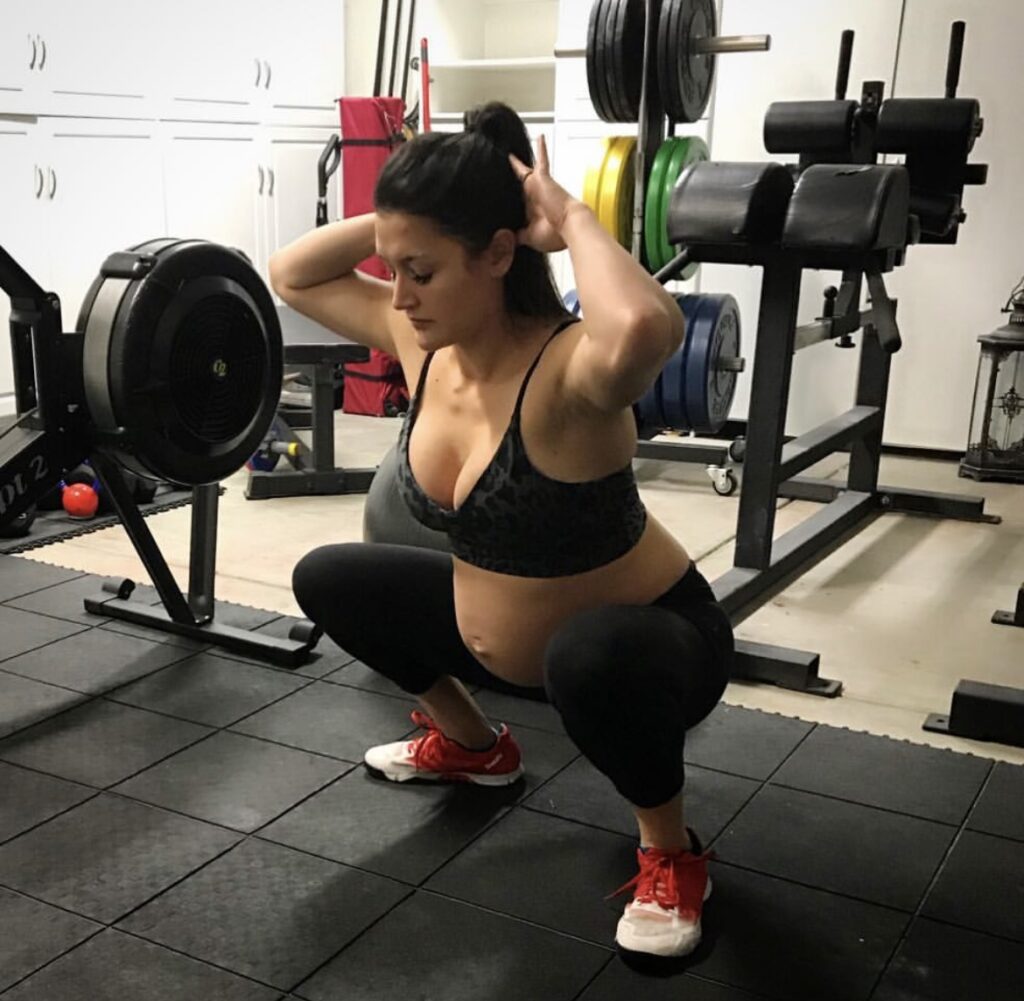
SQUATS & LUNGES
Squats & lunges help promote better balance and stability, while strengthening the legs, lower back, and pelvic muscles – all of which are important physical benefits during pregnancy. They can also increase flexibility and range of motion, which can be particularly useful during labor and delivery. Additionally, squats can help increase blood circulation throughout the body, promoting healthy digestion and reducing pregnancy-related constipation and swelling.
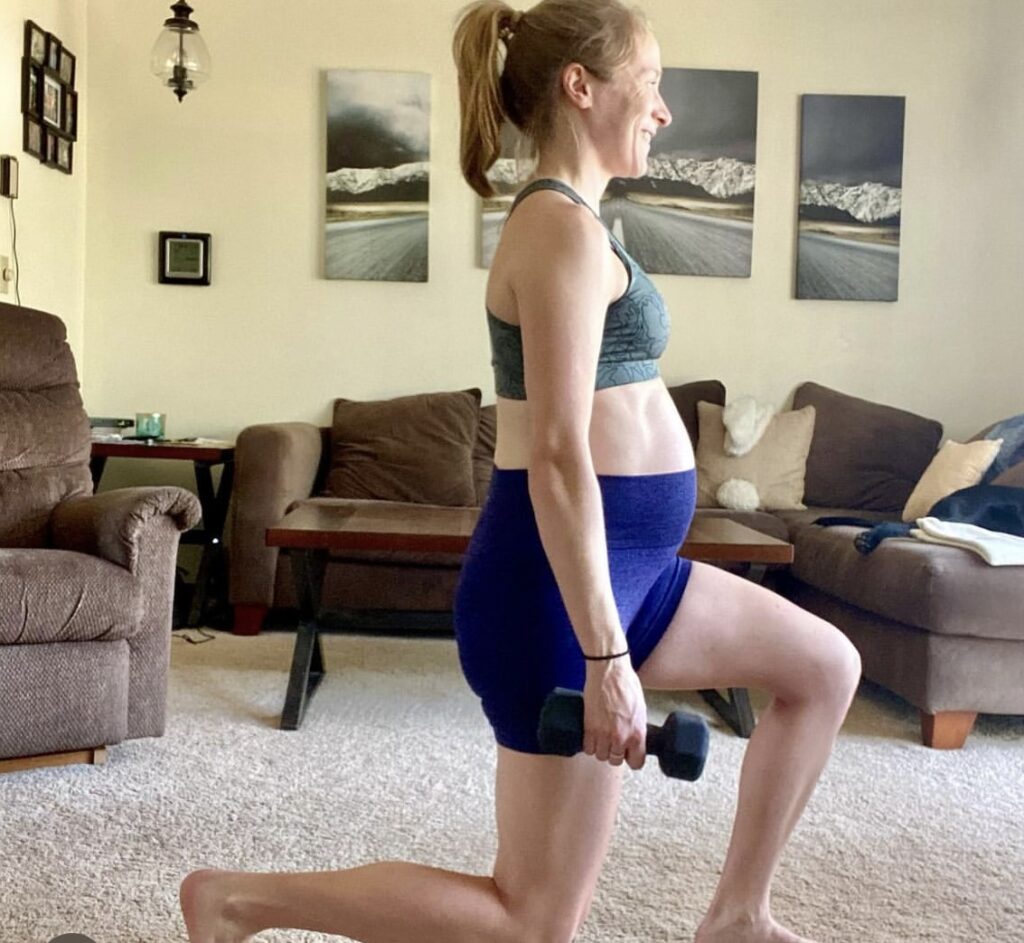
SEATED ROWS
This exercise strengthens the muscles of the upper and middle back, as well as the arms and shoulders. By building strength in these areas, pregnant women can improve their posture and reduce back pain.
Another benefit of seated rows during pregnancy is that they can be performed with minimal impact on the joints. Unlike many other exercises, such as jumping or running, the seated row is not a high-impact movement that puts unnecessary stress on the body. This makes it a safe and effective exercise for pregnant women who want to maintain their fitness without putting themselves or their baby at risk.

SHOULDER PRESSES
Shoulder presses can build upper body strength and improve posture, which is helpful when women experience weight gain and postural changes from pregnancy. This exercise also builds strength and endurance that can make the act of giving birth easier.
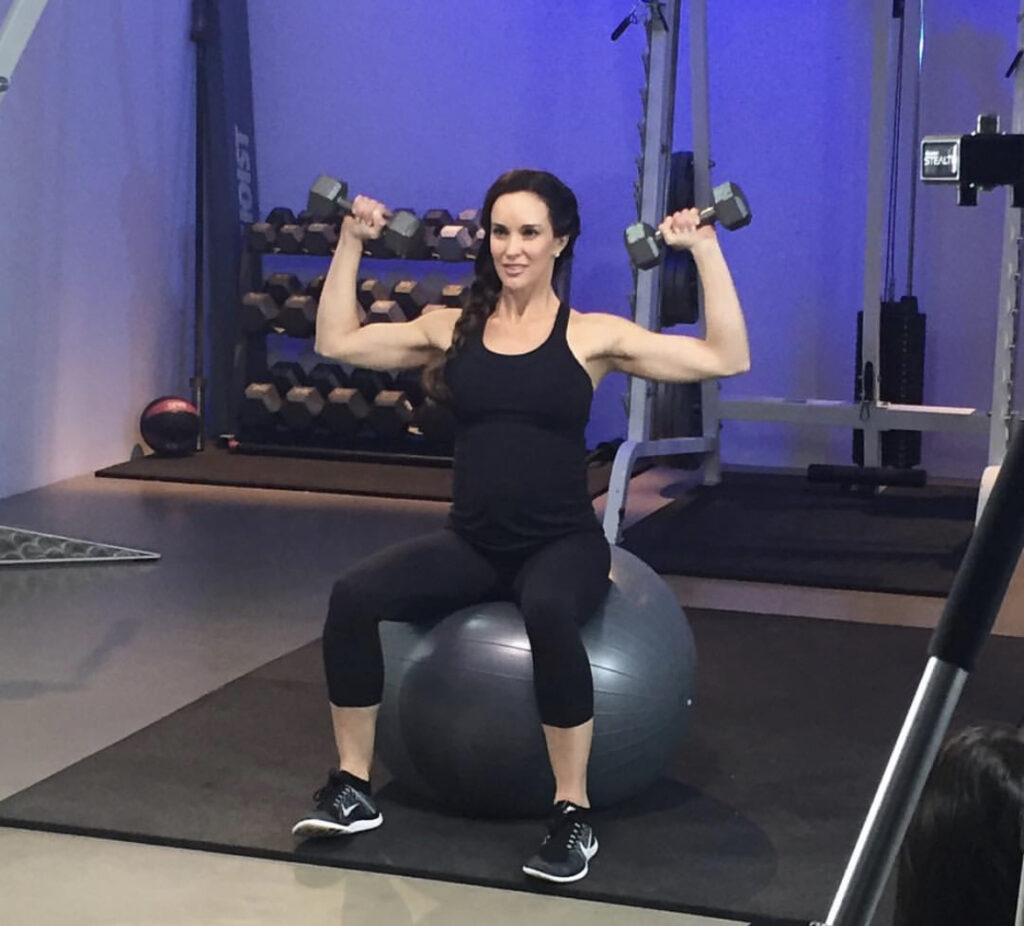
INCLINE CHEST PRESSES
By engaging the chest and shoulder muscles, incline chest presses can help enhance upper body strength and support posture. Additionally, incline chest presses also help in toning the arms and chest muscles, which can be beneficial post-pregnancy. Laying on an incline, as opposed to a flat bench, will avoid putting pressure on the spine that could otherwise cause injury. Furthermore, an added advantage of incline chest presses is that they can help prevent back pain, maintain a good posture, and relieving stress.
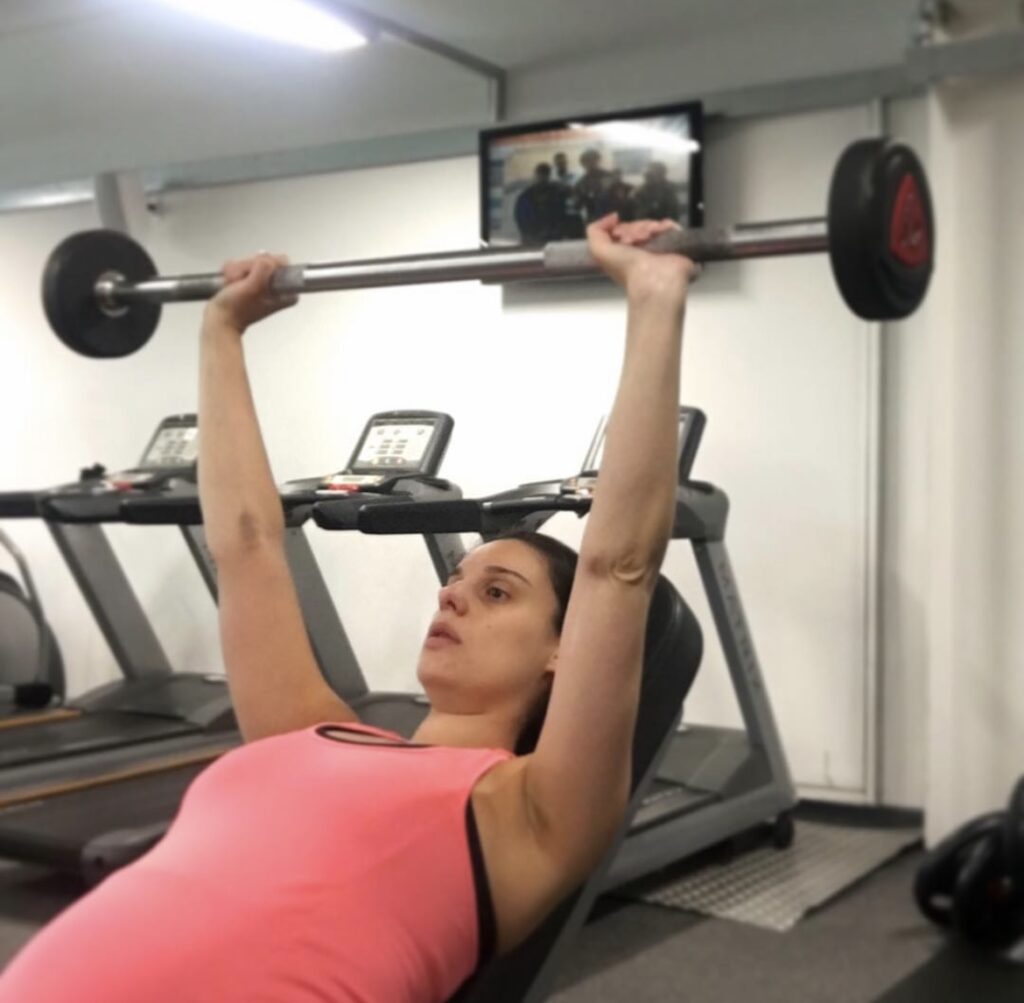
CONCLUSION
It is important to remember to use proper form and technique when performing weight training exercises during pregnancy. This may mean using lighter weights than usual and taking breaks more frequently. It is also important to listen to your body and modify exercises as needed to avoid any discomfort or pain. By choosing the right exercises and taking necessary precautions, weight training can be a safe and effective way to stay healthy during pregnancy.
Did you enjoy this article? How ’bout another?:
Why is Adrenal Fatigue So Dangerous for Women? – https://immortal-training.com/why-is-adrenal-fatigue-so-dangerous-for-women/
Optimising Strength Training and Diet Around Your Menstrual Cycle – https://immortal-training.com/strength-training-and-dieting-throughout-your-menstrual-cycle/
REFERENCES:
https://www.ncbi.nlm.nih.gov/pmc/articles/PMC4622376/
https://www.ncbi.nlm.nih.gov/pmc/articles/PMC4282454/
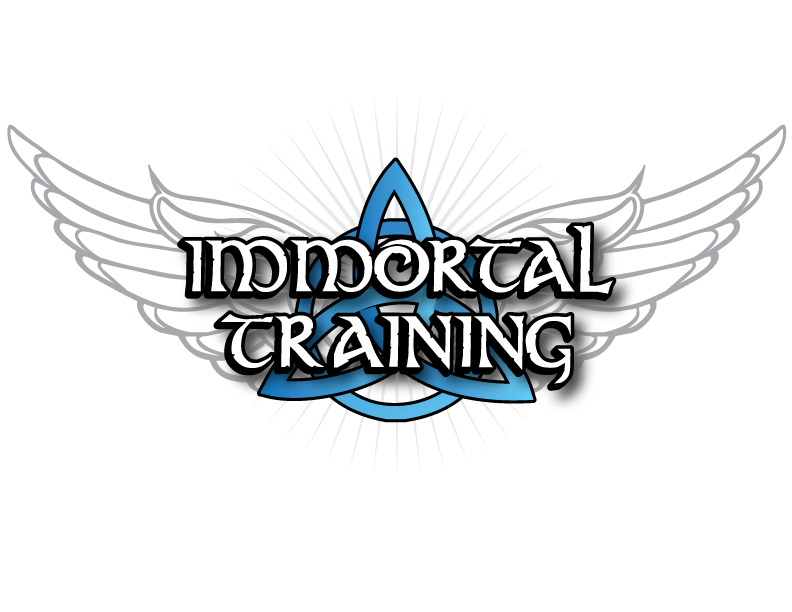
Recent Comments